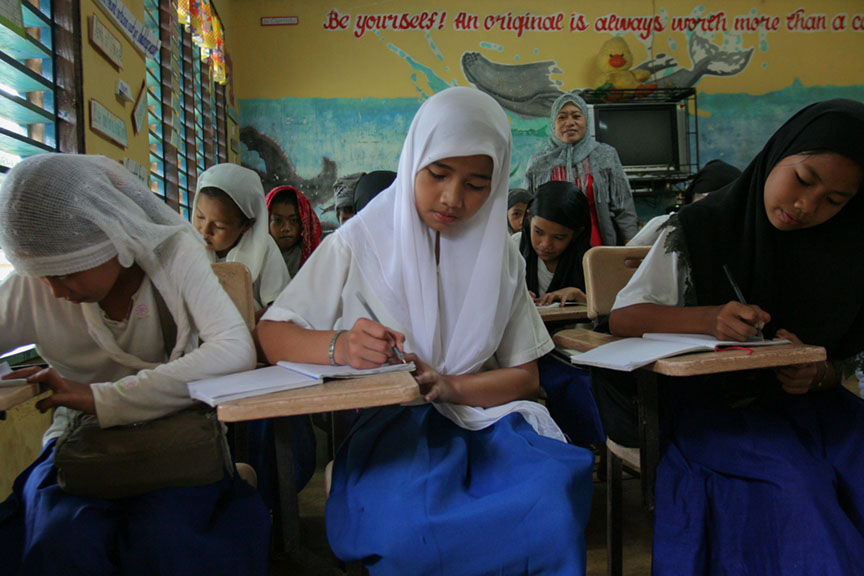DAVAO CITY (MindaNews / 28 Sept) – The Catholic Educational Association of the Philippines (CEAP) said it is planning to pool support from the Catholic institutions in the country to help improve the teaching standards of schools in the five-province, two-city Autonomous Region in Muslim Mindanao (ARMM).
 A classroom in Indanan, Sulu. MindaNews file photo by BOBBY TIMONERA
A classroom in Indanan, Sulu. MindaNews file photo by BOBBY TIMONERA
In a press conference on the first day of the three-day 2017 CEAP National Convention at the SMX Convention Center Davao Wednesday, CEAP president Joel Tabora said the plan has been in the works after meeting representatives from the ARMM’s Department of Education, Commission of Higher Education, and bureau head of Madaris Volunteer Program to determine in what form the Catholic schools can support the ARMM schools.
Some 3,200 delegates coming from 1,500 Catholic schools in the Philippines participated in the three-day gathering.
“They tell us the standard of preparedness of Muslim teachers is relatively low. We have many schools of education, we have many schools where we have experts in education and we would like to share this expertise with our brothers and sisters in Muslim areas who, as they say, can use this expertise,” the prelate said.
He said that the “educational delivery is worst in Muslim Mindanao” partly because of the historical injustices that have been “committed by the nation on its Muslim and Lumad population and how this is not just a Mindanao problem but a national problem.”
“The war in Mindanao has a religious dimension but its roots are clearly in social injustice,” he said.
Tabora, Ateneo de Davao University (ADDU) president, said he hopes to share “with them the techniques of good teaching and to help them improve the standards of their teaching.”
According to the 2015 data of National Anti-Poverty Commission (NAPC), the poverty incidence in the ARMM provinces of Basilan, Lanao del Sur, Maguindanao, Sulu, and Tawi-Tawi rose to 53.4 percent in the first semester in 2015 from 46.9 percent in the same period in 2012.
“This means that one out of two families in ARMM had an income lower than the poverty threshold or the minimum income to meet the basic food and non-food necessities,” it said.
A 2016 report of the Philippine Statistics Authority (PSA) stated that the ARMM has a total population of 3,781,387 as of August 1, 2015, with Maguindanao having the biggest population at 1.17 million, followed by Lanao del Sur at 1.05 million, Sulu at 825,000, and Tawi-Tawi at 391,000.
During the 2017 CEAP National Convention, Tabora said they will look at various ways in which they are already involved in and yet to participate in the inter-religious and intercultural dialogue to address what ails Mindanao, most especially the violent extremism.
“In inter-religious and intra-religious dialogue, we will consider how might our schools make a contribution against extremism by developing counter narratives to the narratives of violent extremism that are being propagated today, but also by returning to true religion in an environment where there is a diversity of religions,” he said. (Antonio L. Colina IV / MindaNews)
